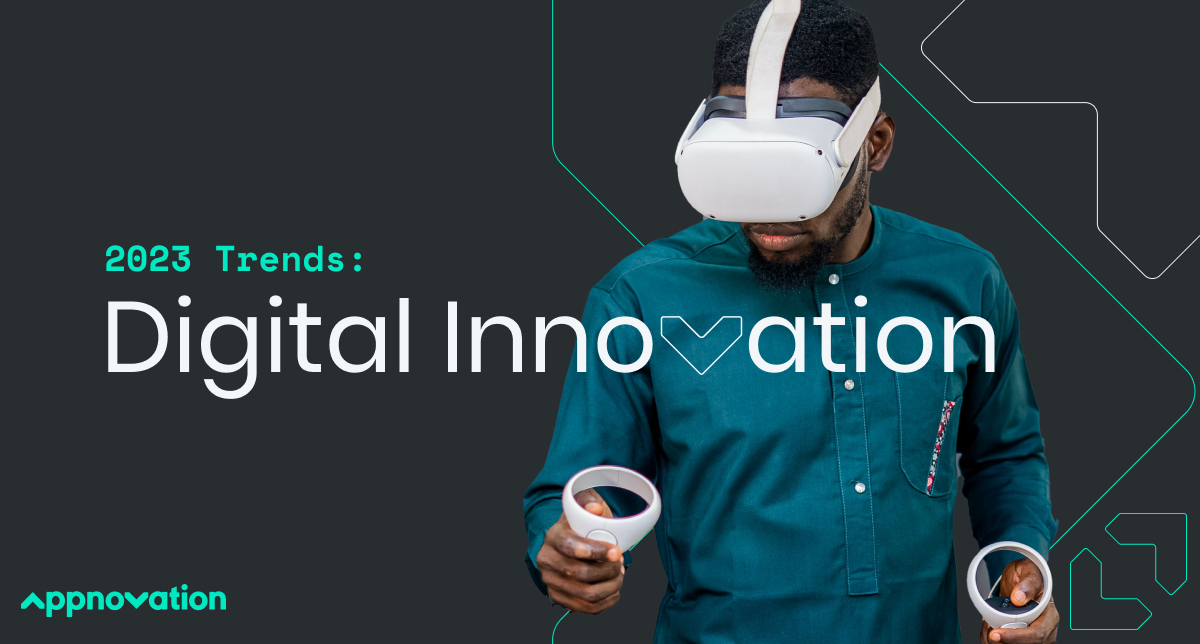To get ahead in a slowing economy, more organizations will shift their sights from the Customer Experience (CX) to a Total Experience (TX).
With economists predicting a slower 2023, now is the ideal time to revisit your digital strategy—either to identify opportunities to bolster sales, increase organizational agility, or update your technological foundation.
That said, knowing where to start—and where to focus your attention—can be challenging.
According to Forrester, most organizations are going to struggle to maintain a strong customer experience (CX) in 2023—making CX a major differentiator for brands that continue to prioritize it. At the same time, using technology to build resiliency (through modernized business processes, automation, supply risk management and employee experience) will be important during these economic times.
As a result, we’re seeing a number of future-forward organizations completely shift their technology strategies—and focus on investments designed to build a total experience (TX).
TX is a strategy that improves the interactions of both internal and external stakeholders by connecting the customer experience (CX) with the employee experience (EX). This strategy can facilitate increased organizational agility and better position organizations for the future by ensuring the CX is supported by internal stakeholders.
If building a TX is something you’re considering in 2023, below are a few emerging technological trends that can support your transformation.
Metaverse experiences will enhance digital ecosystems
The metaverse enjoyed a huge surge in momentum and media coverage in 2022, with many corporations, artists and celebrities acting as early adopters. That said, while we saw a host of metaverse innovations—in the form of new videogames, product launches and even virtual concerts—it remains a long way from maturity, and has remained out of reach for most.
That will begin to change in 2023. As the metaverse lands on more brands’ radars, and its potential to enhance digital ecosystems and UX become more widely known, this technology will inevitably become more mainstream—starting with more immersive experiences enabled by Augmented Reality (AR) and Virtual Reality (VR) advancements.
The metaverse can also support organizations looking to build a robust TX strategy. As we’re seeing from early adopters, it can allow you to develop mixed reality experiences to better engage with customers. At the same time, the interactive nature of the metaverse can make for a very useful internal productivity tool that can be leveraged to enhance training, collaboration, recruitment and employee engagement.
The metaverse’s potential is enormous. In healthcare, for instance, many providers are already exploring VR for training and education, AR in surgery, enhanced immersive experience for telemedicine, and support groups in the virtual world. The metaverse also has the potential to broaden access to healthcare, as it’s not bound by geographical barriers.
To successfully integrate the metaverse into your TX, you must have a strong strategy behind it. This means taking time to clearly define the purpose, target audience, and the reason for investing in the metaverse, rather than just following the trend.
AI and machine learning will become more widespread
While AI and machine learning (ML) aren’t new, these technologies have advanced tremendously in recent years—to the point where they’ll likely be adopted on a mass scale, across many different industries, in 2023.
AI and ML can support a TX transformation in countless different ways. Not only do these technologies allow for a higher level of personalization of content and products, but they also help generate more extensive customer behavioural insights, allow for better customer service, streamline payments and improve supply chain efficiencies.
We’re already seeing the benefits of AI and ML in the retail space—where brand and retailers are now able to offer more personalized services, while providing efficient customer assistance when things go awry. In the healthcare sector, providers are leveraging this technology to aggregate and connect more data, build AI-enabled diagnostic tools, offer superior disease management and deliver more efficient and effective care.
Data security and privacy will grow in prominence
Remote work, increased digitization, data collection and sharing—these trends, and countless others, are changing the face of business for the better. But they’re also making businesses more vulnerable to cyber attacks.
To mitigate potential risks—and minimize the damage when breaches inevitably occur—companies around the world are doubling down on their data security and privacy governance. This trend is bound to continue in 2023 and beyond.
A strong data security and privacy posture is integral to building an effective TX—but, to be effective, these initiatives must be executed correctly.
On the one hand, a strong strategy—with effective controls in place—will allow you to provide a safe CX and preserve customer trust. On the other, however, you don’t want your data security and privacy measures, and the associated red tape, to inhibit organizational agility.
To strike a balance, you need to make sure data security and privacy is placed at the centre of your digital strategy, rather than adding controls in after the fact.
The road ahead
As we head into 2023, businesses will continue to face fierce competition in an era of unprecedented change, innovation and technological advancements.
In response, we’re seeing a growing number of CEOs search for ways to enhance corporate agility—through agile transformations that prioritize continuous improvement, optimized processes (to simplify workflow and reduce time-to-market), outcome-focused teams, transparency and efficiency.
Adopting a TX digital strategy can support this greater mandate. By leveraging the power of a unified, multidisciplinary team—a team that works seamlessly together to offer expertise in areas such as data, experience design, and technology—organizations can develop purposeful digital solutions with tremendous internal and external benefits, setting them up for success in 2023 and beyond.
We hope you’ve found our Impactful Data series informative. To learn more about how to realize the full potential of your data, don’t hesitate to talk to us.


